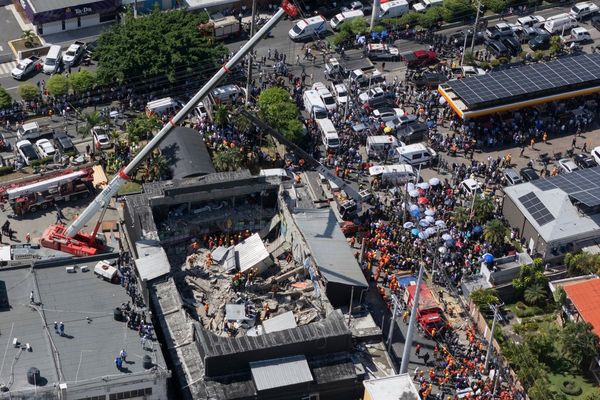
From a maths perspective, Australia’s World Cup campaign is not yet at crisis point. In a nine-match pool stage, losing twice still leaves you seven chances to win. Last time this format was used in 2019 no team won more than seven. England won six and went on to the final, facing New Zealand who won five. A long tournament allows time for mistakes and recovery.
From a human perspective, it feels further gone. Two tentative batting performances in a row, two middle-order collapses, a palpable sense of flatness. Against India to start the tournament, a tricky surface and good spinners still didn’t warrant a slump of five for 30 after a start of 110 for two. Against South Africa in Lucknow on Thursday, the crash began with the openers: six for 43 starting in the sixth over. By the 18th, the survivors were batting for net run rate.
It was there in the six dropped catches that allowed South Africa to surge to 311 for seven. There in the decision to remove a new-ball strike bowler after three good overs, or for a bowling captain to signal quarter-heartedly for an umpire review then walk back to his mark before the process began. There in the management’s insistence that a wicketkeeper was first choice starting this tournament, only to drop him after one match and two balls faced; the same player who made 99 against the same opponent five hits ago.
It is there in the lack of options when a sole specialist spinner is picked in the squad for a format and a location that demand varieties of slow bowling. Both India and South Africa have targeted Adam Zampa’s leg-breaks, and if he continues to struggle then Australia have nowhere to turn. Glenn Maxwell has provided admirable support but one spinning all-rounder can’t do it alone.
In a squad of 15, swapping keepers is one of the few levers selectors can pull. The second is switching Cameron Green – who looks exhausted – for Marcus Stoinis – who is gingerly managing a hamstring. The third would be letting Sean Abbott bowl instead of being a specialist sub fielder. The fourth option is watching from home in Adelaide while his broken hand heals. Australia have missed Travis Head’s inventive batting and useful off spin, but keeping him for later looks increasingly dubious when a fit option could make a difference now.

The opposition is supposed to be the team in crisis, both sporting and existential. For years there has been a South African talent exodus to make a living elsewhere, while the national team’s results have declined. Cricket South Africa neared bankruptcy and is deprioritising international matches in favour of the financial lifeline of a domestic T20 competition backed by Indian investors. When that inaugural edition last January was scheduled over the top of an existing ODI series against Australia, CSA did not hesitate to forfeit the latter, never mind that doing so left their team on the brink of missing direct entry to this World Cup.
That left South Africa requiring an unlikely series win over world champions England among other results – but the Proteas delivered. Only after Ireland had played Bangladesh in May were they sure of their spot. The pay is poor, the future of even the concept of a South African team is shaky, yet here they are, surging through their first two matches, demanding to be regarded as contenders.
As South Africa have been playing less, Australia have been playing more. Among various white-ball series and the end of the last home summer, this year has involved four Tests in India, an emotionally draining Ashes tour, and now this World Cup – three of the biggest assignments a player can face in the space of eight months. Players cross formats. Ten of the World Cup squad played in the Ashes. Incumbency and seniority are respected perhaps to the team’s detriment. The aforementioned flatness might simply reflect being out of juice.
And sure, let’s not go too early. Even a sputtering Australian side should – let’s stress, should – do the job against Netherlands, Afghanistan and Bangladesh. That would mean they need three wins out of four against Sri Lanka, Pakistan, England and New Zealand. It’s not mission impossible. But it’s going to need something, some sort of spark that can get this team enjoying the challenge instead of being daunted by it.
Kusal Mendis has found that spark. The Sri Lankan No 3 turned a loss to South Africa into a celebration, making 76 from 42 balls in a display of the cleanest possible hitting with eight sixes along the way. He parlayed that into 122 from 77 in his next outing against Pakistan, making his country’s fastest World Cup ton. He has torn up the Aussies before, flipping a Test match in Pallekele in 2016 with a fierce hundred. If he drives Sri Lanka to another win over Australia this coming Monday, then we can start to talk crisis for real.







